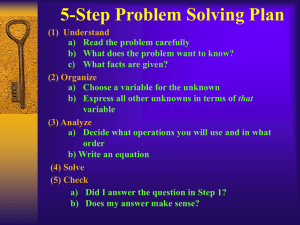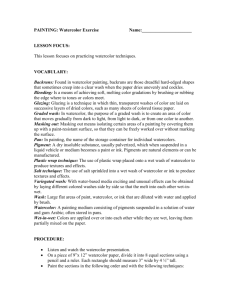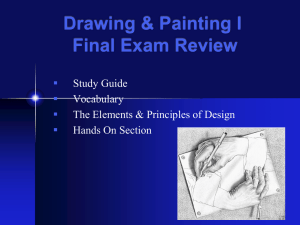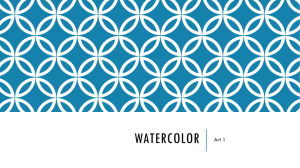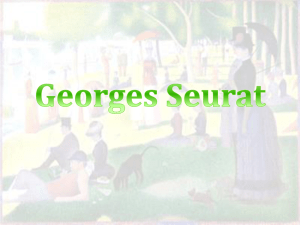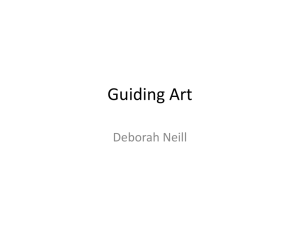In this lesson, students will explore the medium of watercolor paints
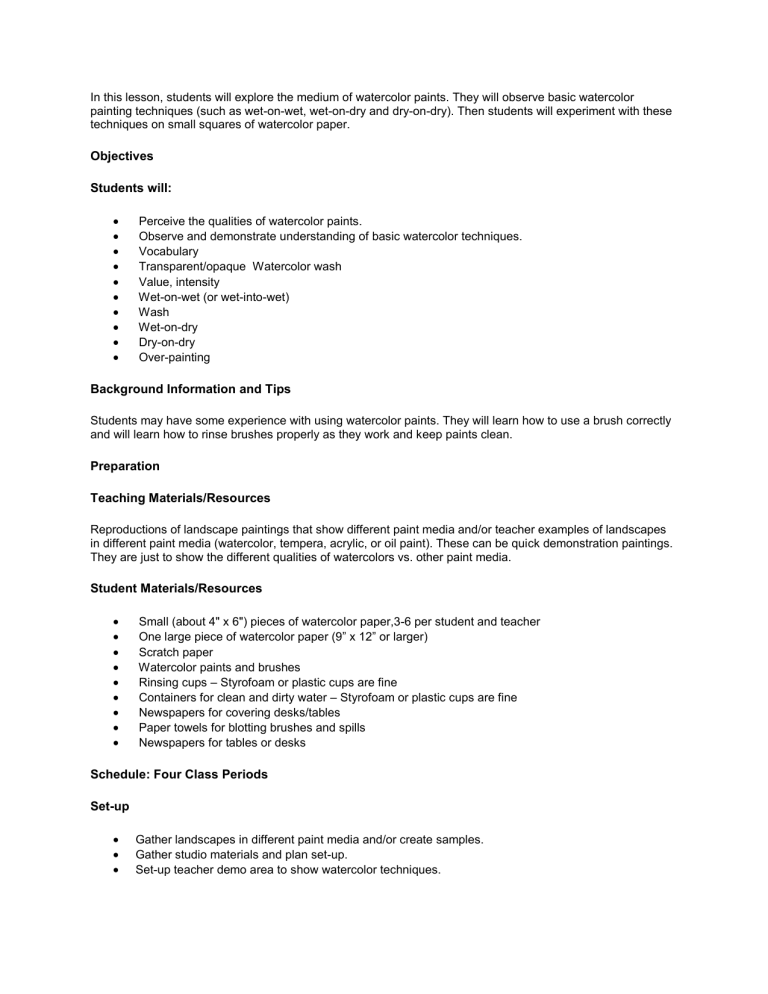
In this lesson, students will explore the medium of watercolor paints. They will observe basic watercolor painting techniques (such as wet-on-wet, wet-on-dry and dry-on-dry). Then students will experiment with these techniques on small squares of watercolor paper.
Objectives
Students will:
Perceive the qualities of watercolor paints.
Observe and demonstrate understanding of basic watercolor techniques.
Vocabulary
Transparent/opaque Watercolor wash
Value, intensity
Wet-on-wet (or wet-into-wet)
Wash
Wet-on-dry
Dry-on-dry
Over-painting
Background Information and Tips
Students may have some experience with using watercolor paints. They will learn how to use a brush correctly and will learn how to rinse brushes properly as they work and keep paints clean.
Preparation
Teaching Materials/Resources
Reproductions of landscape paintings that show different paint media and/or teacher examples of landscapes in different paint media (watercolor, tempera, acrylic, or oil paint). These can be quick demonstration paintings.
They are just to show the different qualities of watercolors vs. other paint media.
Student Materials/Resources
Small (about 4" x 6") pieces of watercolor paper,3-6 per student and teacher
One large piece of watercolor pape r (9” x 12” or larger)
Scratch paper
Watercolor paints and brushes
Rinsing cups
– Styrofoam or plastic cups are fine
Containers for clean and dirty water
– Styrofoam or plastic cups are fine
Newspapers for covering desks/tables
Paper towels for blotting brushes and spills
Newspapers for tables or desks
Schedule: Four Class Periods
Set-up
Gather landscapes in different paint media and/or create samples.
Gather studio materials and plan set-up.
Set-up teacher demo area to show watercolor techniques.
Arrange classroom furniture to create a discussion area to ensure maximum participation and ability to see visuals.
Procedure
Group discussion: Have students examine the examples of landscapes made with different paint media. Guide students to see the different qualities of the media the examples represent. Have them draw on their own experiences with media to compare and contrast different paints. Eventually, focus their attention on the watercolor examples.
Some sample questions:
1) How would you describe this media? (light, airy, dark, thick, soft, hard-edged, transparent [see-through], opaque)
2) Has anyone ever used _____paint? What was it like? Was it hard or easy? What do you like about ____ paint? What do you find challenging?
3) How are watercolors different from other media?
Watercolor paints are often more fluid or flowing than other paints. They are sometimes diluted and transparent rather than opaque. Watercolor paints are not built up in thick layers. Sometimes you can even see patches of paper left unpainted. You usually cant paint over mistakes the way you can with other paints!
Note: As many adults see watercolors as cheap, easy-to-cleanup paints, they are often a child’s first painting experience. Yet water colors are difficult for younger children to control…especially on regular paper. Many students may remember being frustrated with earlier watercolor painting. They may recall puddles and runny paint drying into curled, rumpled disasters. Less-is-more is a difficult concept for young children. So early painting attempts may have led to dull, grayish colors and paper scrubbed clean through by enthusiastic brushstrokes. Acknowledge any skepticism from the students about watercolor painting and let them know I
’ll be showing them some new techniques to achieve beautiful paintings!
We’ll begin with an introduction to painting, painters and some recent history of painting to establish some perspective before jumping into the art demonstration.
Have the demonstration area set-up just as you want students to organize their workspaces. If this is their first watercolor painting experience in your classroom, discuss the purpose of the layout. Here is a sample set-up for a table of four:
Review any brush-holds, rinsing procedures, and blotting techniques they will need. Go over classroom procedures for getting clean water etc.
Pass around some squares of watercolor paper and point out how it is different from regular paper. Even student-grade watercolor paper will give students more control over their paints and will help prevent pooling, uncontrolled bleeding and curling. You may also want to point out its greater expense and direct them to scratch paper for color testing and practice brushstrokes.
Class 2
Wet-on-Wet Technique: Creating a Wash
Remember that each grade will focus upon
their particular subjects
—background, middle ground, foreground, objects, etc.
Explain: A wash is a very thin coat of paint. You can still see the paper underneath a wash as it is transparent.
Washes are good for flat, light areas like sky or a large body of water.
On the back of one paper square, write your name and "wet-on-wet" or "wash." Make sure students pre-label the back of each piece of paper before painting.
Explain that washes are created using a technique called "wet-on-wet." This simply means you are painting with a wet brush on wet paper.
Take a thick brush and paint clean water evenly across your paper. The paper should become wet but not drippy…no puddles.
Select a color and paint across the paper in a horizontal band. Continue with the same color or choose another color paint a band next to it. Show your students how the colors bleed and blend together where they meet.
Continue painting.
Point out that you brush once or twice then leave it alone…don’t go back and brush over it (you aren’t "painting a fence!"). Let the paint blend and surprise you!
Set aside to dry.
Class 3
Wet-on-Dry Technique:
This technique is well-suited for the painting areas that require greater control and more saturated colors as in the foreground of a landscape. Wet-on-dry means you work with a wet brush on dry paper.
Paint abstract shapes and lines. Experiment with the brush and the amount of paint and water than you use. Blend colors and note how they bleed when they hit other wet spots and stay put when they are applied to dry paper. Encourage students to experiment and stay abstract.
Class 4
Dry Brush Technique:
By blotting your brush dry and applying it to dry paper you can get interesting textures, hard edges or really saturated colors.
Try out different brushstrokes and amounts of paint. Encourage students to experiment and discover the effects this technique provides.
Guided Practice
Have your students try the various techniques and experiment on their practice squares.
Remind them to put their names and label the technique on the back of their squares before they start painting.
Set aside to dry. If you wish, you may continue on to the Watercolor Landscapes Lesson.
Teacher/Community Lesson Plan Demonstration
Grades K - 3
Complete Lesson Plan
I will outline this classroom approach to the adult audience using a PowerPoint presentation. I will need a computer and a projector for this demonstration, along with a table to set up materials as a visual aid.
Lesson 1 c Discovering the Horizon
Teaching Materials/Resources
1) as many landscape prints as can be acquired (this is vital!)
2) several sheets of any quality of plain white paper (to mask off horizons in landscape prints) cut into strips to fit your print examples
3) your own ready-made viewfinder
4) examples of the project at 3 different stages: under-drawing, wash, and completed painting
5) if necessary, prior approval for taking a quick trip outside or around the school or a "picture file" of many landscape magazine photos (laminated, if possible)
Student Materials/Resources
1) pencil
2) construction paper
3) scissors
4) watercolor paper (any white paper 80 lbs. or above) 8 1/2 x 11
5) 2-3" cardboard squares, or use any existing hard square shape
Vocabulary
Landscape
Horizon
Under-drawing
Evaluate
Watercolor
Tempera
Wash
Silhouette
Details
Center of interest or Focal point
Introduction: Group Discussion
Display your collection of landscapes to students. Ask them to describe what they see (land, weather, tiny figures or buildings#). Explain that a landscape is a picture in which the land is the most important subject.
Using your immediate surroundings, ask your students to locate land and sky. Do they meet? Ever? Do they meet in the landscape prints shown?
Using your plain white paper strips, mask over the horizon in one landscape print.
How does it look to the children? What’s missing? That spot where the sky and land APPEAR to meet! Identify that spot as the horizon.
You could also demonstrate the common "mistake" of drawing a landscape with a band of sky and a band of land and contrast it with landscape in which the sky and land meet.
Explain that they will begin a landscape painting today. First they need to gather ideas for the subject of their landscape. If a "field trip" is not feasible, your students can get ideas from a "picture file" of landscape magazine photos. You could then also skip the viewfinder steps and proceed to the under-drawing.
If possible, explain you will take your students on a quick field trip around school (outside if the weather permits). Show your students your viewfinder and demonstrate its use: look out the window and hold the viewfinder out at arms length. Describe to them what you see. Move it both horizontally and vertically and move so that you are looking at something different. Pretend to take pictures of the views that you are seeing. Explain that artists look carefully and plan their landscape compositions.
Explain that each student will make their own viewfinder today and gather ideas for a landscape painting. (If you are short on time, you could make the viewfinders ahead of time and skip the next step.)
Demonstration for viewfinder construction
1) Hold a piece of construction paper horizontally and fold it in half.
2) Use your pencil to trace a 2-3" square in the middle of the fold.
3) Cut out the square and unfold the construction paper. Voila! A viewfinder.
Activity: making viewfinders
Pass out the construction paper, pencils, cardboard squares, and scissors. Guide students through the making of their own viewfinders slowly, step by step. Watch that your students cut ON THE FOLD. It’s a common mistake.
Tour: Landscape brainstorming
Take students outside, or to a large window where they can use their viewfinders. Guide them through the use of their viewfinders, if necessary by repeating a demonstration. As they are experimenting with their viewfinders, encourage them to move it so that the horizon line goes up and down. Have students pretend that they are taking pictures to take back to the classroom.
Under-drawing
Back in class . . . what do the students remember about their pretend "pictures?" What happened to the horizon when they moved their viewfinders up and down? In which position did they see the most sky? Or land?
Show students the three examples of the project, and explain that today they will make an under-drawing (a light drawing) on their paper to show where the horizon will be. Show students how to estimate 1/4 of the way up the paper by first making a light mark at half and then half again. That is the level at which they make their horizon. Demonstrate an under-drawing and save that example for your own use in the next lesson.
Pass out the watercolor paper and pencils. Encourage students to use their imaginations when they make their horizons. Even though they needn’t put in details, they can certainly make their landscape horizons show any type of topography. Use the selection of landscape prints from the beginning of class to show the possibilities.
You could talk about the difference between realistic and abstract styles.
When students are finished with their under-drawings, have them write their names on the back. Collect their under-drawings and save them for the next lesson. Students can keep or recycle their viewfinders.
Lesson 2 c Watercolor Wash
Teaching Materials/Resources
1) a selection of landscapes (photos or paintings) that feature colorful skies
2) supplies for a demonstration: 8 1/2 x 11 watercolor paper (any white paper 80 lbs. or above), Watercolor or tempera paints, pencil, Pink Pearl eraser, brush (size 12, or 5/8 in. wide bristles), water
3) examples of the project at three stages: under-drawing, wash, and completed painting
Student Materials/Resources
1) under-drawings from previous lesson
2) Watercolor paints
3) brush (size 12, or 5/8 in. wide bristle)
4) water - 3 or 4 students can share a bucket
Background Information and Tips
Bring several examples of your own work, especially the ones that flopped! Share any tips you have from your own experience and experimentation. Spend a lot of time with your demonstration and don’t assume they know anything. The actual painting activity won’t take long at all.
Introduction: Group Discussion
Review the concepts of landscape and horizon. Using your images of landscapes, call on students to identify the horizons. In which pictures do they see the most and least sky? Explain that artists sometimes draw attention to a certain part of a picture by making it bigger or more colorful. That is the center of interest or focal point. Sometimes the land is the center of interest and sometimes it is the sky.
Ask students to speculate as to the importance of sky and land in the pictures they see. What colors did the artist use? Are artists styles realistic or abstract? What media did they use? Point out the qualities of watercolor paints if you have a good example.
Using your own watercolor painting as an example, ask children to identify the most important part of your work. Explain that they will create a colorful sky by using a watercolor wash. Using your own under-drawing, show students where everyone will be painting today.
Demonstrate a self-evaluation of your under-drawing by asking yourself out loud "I want people to notice the colorful sky I am going to make today. Is my horizon in the right place? (It should be low enough on the page to have room for lots of sky) Do I have enough space to make a big and colorful sky?" Correct your light underdrawing with an eraser in one or two places to demonstrate that artists change things as they work.
Demonstration
Gather students so that everyone has a clear view of you. Warn students that you will be working rather quickly at times. Identify your supplies, and give a running commentary of everything you do.
1) Decide what colors you would like to use. Add some water to these colors and work it into the paint. But don’t paint on the paper yet!
2) Use your wide brush to thinly paint clear, clean water over the entire area of your paper ABOVE the horizon line. No puddles -- demonstrate how to gently dab up puddles with a clean paper towel…no scrubbing.
3) Talk about your color choices to make a bright, beautiful sky. Use your brush to add your first color of paint to the paper. Watch how the paint spreads, then add the rest of the colors next to but NOT ON TOP OF the first color. Resist the temptation to paint over what you have already done.
4) When you are finished painting, PUT DOWN THE BRUSH. Pick up your painting and gently tip it from side to side just once or twice, allowing the colors to blend even more.
5) That’s it! You told them it would be quick! Show them where to dry their paintings.
Activity
Pass out under-drawings and pencils first so students can evaluate their work and make any changes.
Discourage vigorous erasing, as it will damage the paper fibers.
When students have all their painting supplies, lead them through the process of a watercolor wash step-bystep, then have them immediately put their paintings in a drying rack.
Its not hard to come up with an interesting painting. Do warn your students against scrubbing their paper. This causes the paper to pill and the watercolor to loose its natural luminosity. Over-enthusiastic students have been known to drill right through the paper with too much brushing!
Lesson 3 c Details, Details!
Teaching Materials / Resources
1) "landscape picture file" and/or images of landscapes (photos, books or paintings) in particular, sunsets and sunrises that show silhouettes
2) examples of the project in three stages: under-drawing, watercolor wash, and completed painting
3) supplies for your painting demonstration: Watercolor paints, water, paper towel, pencil, brush (the little brush that comes in the watercolor paint box will do)
4) your dried watercolor wash from Lesson Two with a detailed horizon drawing, ready to paint
5) flashlight
6) some solid objects (i.e. a ball, a mitten) vs. some open shapes (i.e. a wheel, your hand!)
Student Materials/Resources
1) dried watercolor wash from Lesson Two
2) Watercolor or tempera paints
3) paint brush (they can use the little brush in the paint box this time)
4) paper towel
Silhouette Demonstration
Explain now they will finish their landscapes by painting the land. Remind them that they still want the sky to be the center of interest…colorful and beautiful watercolor washes. So they will be creating land silhouettes.
While pointing to your finished example painting, explain that a silhouette is an outline filled in with one color against a light background. Ask for a show of hands of who has seen a beautiful sunset. Turn out the lights in the classroom and use your flashlight to illuminate a bare piece of wall. Hold the ball and wheel just in front of the flashlight. Demonstrate that silhouettes can be detailed by juxtaposing the solid silhouette of the ball with the detailed silhouette of a wheel. Do the same with the mitten versus your open hand.
Don’t rush through the concept of silhouette. Encourage students to think about what makes an interesting silhouette. Have your detailed drawing of a horizon completed and ready to paint.
Introduction
Quickly review what your students have already accomplished.
Silhouette Painting Demonstration
Gather students in the same manner as with the watercolor wash demonstration. Give a running commentary of every step and decision you make.
1) Show children your light drawing of the horizon details.
2)
Add just enough water to moisten the black paint. This is NOT a wash…do not wet the paper! Demonstrate how to blot excess water by dabbing your brush on a paper towel.
3) Beginning with the detail highest on the page, paint your silhouette of your horizon black.
4) Move down the painting slowly, filling in the rest of your silhouette.
5) Move painting aside to dry.
Silhouette Painting Activity
Pass out each child’s dried watercolor wash and a pencil for drawing in the horizon details.
Encourage students to use their imaginations to create any landscape from any country and any era they choose. Let the pictures you brought today inspire them!
Set-up for watercolor painting as before. (Or you may choose to have watercolor painting stations that students go to paint when they are ready).
Allow paintings to dry in a rack. When they are completely dry you may need to flatten them under some heavy books. Students can mount them on colored construction paper, title and sign them for display.
T
